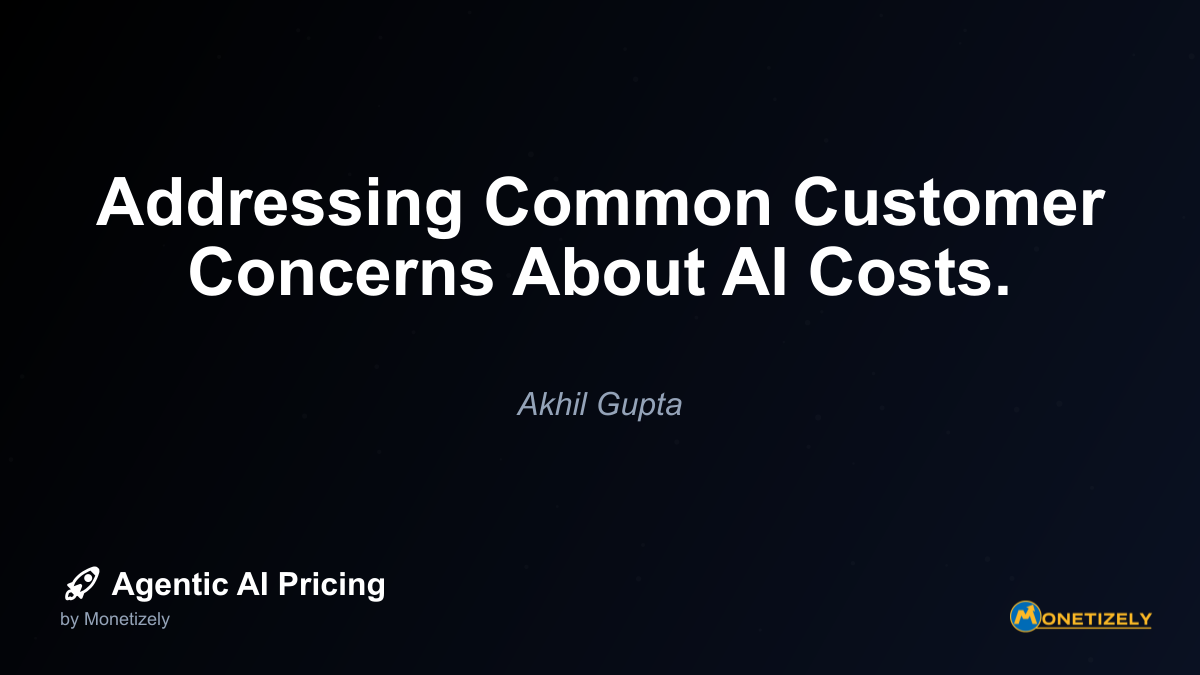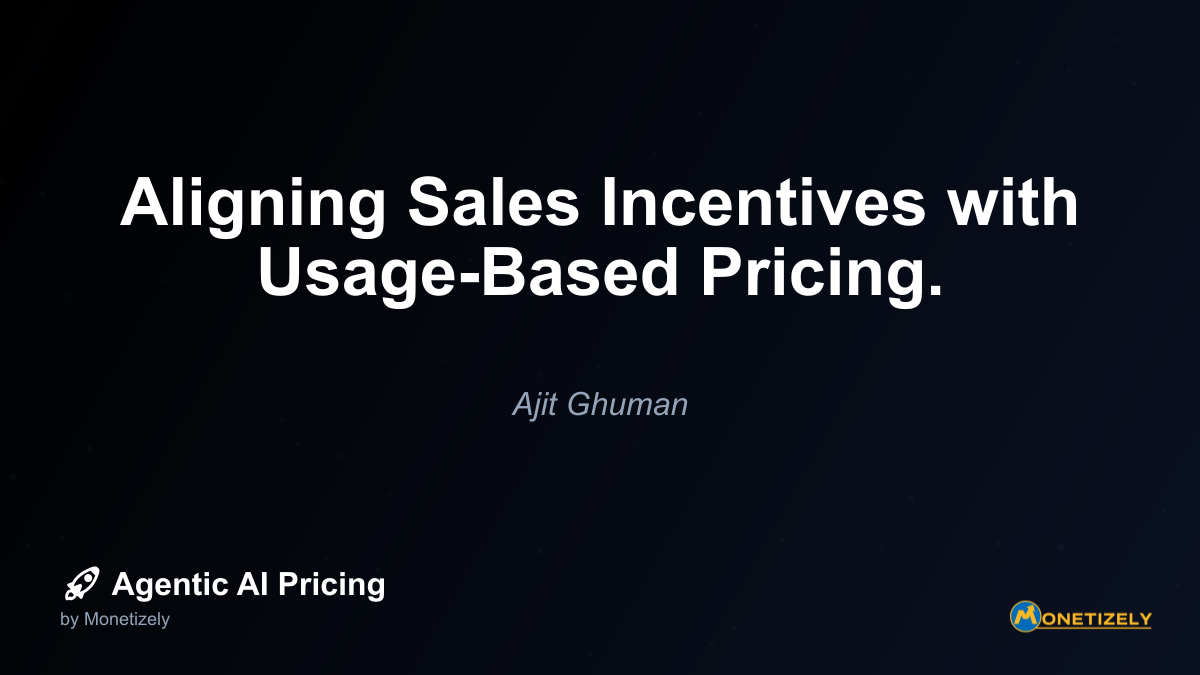· Ajit Ghuman · Best Practices · 4 min read
The Role of SLAs (Service Level Agreements) in AI Contracts.
AI and SaaS Pricing Masterclass
Learn the art of strategic pricing directly from industry experts. Our comprehensive course provides frameworks and methodologies for optimizing your pricing strategy in the evolving AI landscape. Earn a professional certification that can be imported directly to your LinkedIn profile.

Integrating SLAs with Outcome-Based Pricing Models
The evolution of AI SLAs has coincided with the rise of outcome-based pricing models, creating powerful synergies between contractual guarantees and commercial structures. When properly aligned, these elements create a compelling value proposition for both vendors and customers.
The Connection Between SLAs and Pricing Models
SLAs serve as the foundation for outcome-based pricing by establishing:
- Clear Definition of Success: What specific outcomes constitute success for the customer
- Measurement Frameworks: How those outcomes will be quantified and verified
- Risk Allocation: How financial terms adjust based on performance
For organizations exploring AI services, understanding this connection is crucial for negotiating fair agreements that protect their interests while providing vendors with appropriate incentives.
Common Outcome-Based Pricing Structures
Several pricing structures leverage SLA frameworks to create alignment between vendors and customers:
Gain-Share Models: The vendor receives a percentage of documented cost savings or revenue increases generated by the AI solution. The SLA establishes the measurement methodology and baseline.
Performance-Based Fees: A portion of the service fee is contingent on meeting specific performance metrics defined in the SLA.
Success Fees: One-time payments triggered when the AI solution achieves specific milestones defined in the SLA.
Subscription + Success Fee Hybrid: A reduced base subscription combined with performance bonuses when the solution exceeds SLA targets.
For more detailed information on outcome-based pricing structures, explore our comprehensive guide at https://www.getmonetizely.com/articles/the-cfos-cheat-sheet-to-ai-outcome-based-pricing-how-to-link-payments-to-performance.
Negotiation Strategies for AI Service Level Agreements
Effective negotiation of AI SLAs requires balancing multiple considerations, including risk allocation, performance expectations, and commercial terms.
For Customers: Maximizing Protection While Maintaining Flexibility
Start With Business Outcomes: Focus negotiations on the specific business outcomes you expect rather than technical specifications.
Secure Appropriate Remedies: Ensure remedies are proportional to the business impact of service failures.
Maintain Flexibility: Build mechanisms to adjust metrics as your business needs evolve.
Address Data Rights: Clarify data ownership, usage rights, and privacy protections.
Consider Implementation Support: Include SLA provisions covering implementation services and knowledge transfer.
For Vendors: Balancing Confidence with Risk Management
Limit Variables Outside Your Control: Clearly define what factors might legitimately affect performance that are outside your control.
Structure Tiered Commitments: Offer stronger guarantees for core functionality while providing softer targets for more speculative capabilities.
Include Customer Obligations: Clearly articulate what the customer must provide (data, access, etc.) for SLAs to remain valid.
Build in Learning Periods: Negotiate initial periods where metrics are measured but penalties don’t apply, allowing for system optimization.
Demonstrate Value Through Transparency: Offer robust reporting that builds customer confidence in your solution’s performance.
Future Trends in AI Service Level Agreements
As AI technology and governance frameworks continue to evolve, several trends are emerging in how SLAs are structured and negotiated:
Increased Sophistication in Measurement Methodologies
Automated Verification: Emerging technologies enable continuous, automated verification of AI performance against SLA metrics.
Standardized Benchmarks: Industry-specific benchmarks are emerging that provide standardized ways to measure AI performance.
Real-Time Monitoring: Rather than periodic assessments, continuous monitoring enables immediate detection and remediation of performance issues.
Ethical and Responsible AI Guarantees
Fairness Metrics: SLAs increasingly include specific commitments around algorithmic fairness and non-discrimination.
Transparency Requirements: Guarantees around explainability and decision transparency are becoming standard in regulated industries.
Environmental Impact: As AI’s energy consumption receives more attention, SLAs may include commitments around carbon footprint and efficiency.
Regulatory Compliance Integration
Pre-Emptive Compliance: SLAs increasingly address emerging regulations before they become legally mandated.
Certification Commitments: Vendors commit to maintaining relevant certifications and standards compliance.
Regulatory Update Mechanisms: Agreements include processes for adapting to regulatory changes during the contract term.
Conclusion: SLAs as Strategic Business Tools
Service Level Agreements in AI contracts have evolved from simple technical guarantees into sophisticated strategic instruments that align vendor incentives with customer success. When properly structured, these agreements provide customers with confidence in the AI solution’s performance while giving vendors the opportunity to demonstrate value and earn appropriate compensation.
For organizations implementing AI solutions, investing time in developing comprehensive SLAs pays dividends through:
- Reduced Risk: Clear performance expectations and remedies protect against business disruption
- Improved Vendor Alignment: Financial incentives drive vendors to focus on your business outcomes
- Enhanced Governance: Well-defined metrics enable effective oversight of AI implementations
- Better Value Realization: Outcome-based structures ensure you pay for results, not just technology
As AI continues to transform business processes across industries, the ability to structure effective SLAs will remain a critical competency for both technology providers and consumers. Organizations that master this skill gain a significant advantage in maximizing the return on their AI investments while minimizing associated risks.
By approaching SLAs as strategic business tools rather than technical formalities, organizations can create agreements that drive innovation, ensure accountability, and deliver meaningful business value from their AI initiatives.
Co-Founder & CEO
Ajit is the author of Price To Scale, a top book on SaaS Pricing and is the Founder of Monetizely. Ajit has led and worked in pricing and product marketing at firms like Twilio, Narvar and Medallia. His work has been featured in Forbes and VentureBeat. Ajit regularly consults with software companies from Seed stage to post-IPO on pricing strategy. Ajit is also a highly-rated co-instructor for 'The Art of SaaS Pricing and Monetization' on Maven.
Pricing Strategy Audit
Let our experts analyze your current pricing strategy and identify opportunities for improvement. Our data-driven assessment will help you unlock untapped revenue potential and optimize your AI pricing approach.




